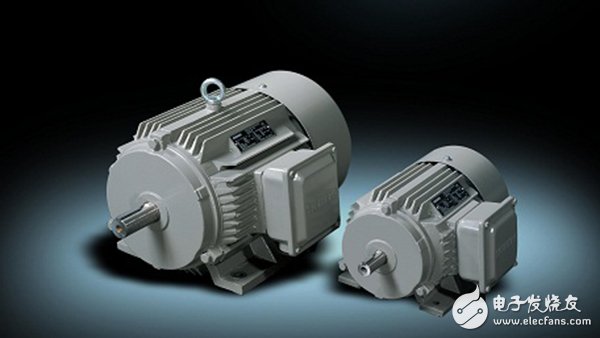The AC servo motor has high control precision, good torque frequency characteristics and overload capability, and is widely used in material metering, transverse sealing devices and fixed length cutting machines. The AC servo motor is a two-phase asynchronous motor, and the two-phase winding space of the stator is at an electrical angle of 90°. One phase winding is the field winding f, one phase is the control winding k, and the rotor is a squirrel cage rotor. When the motor is running, the excitation winding is connected to the single-phase AC voltage Uf, and the control winding is connected to the control voltage Uk, and the two frequencies are the same. The speed control can be achieved by changing the amplitude or phase of the control voltage Uk.
First, the characteristics of the AC servo motor
As a servo machine, in addition to the mechanical characteristics and adjustment characteristics of the linearity, the AC servo motor must also have servo characteristics: when the control signal voltage is strong, the motor speed is high; when the control signal voltage is weak, the motor speed is low; When the control signal voltage is equal to zero, the motor does not turn.
However, the rotational speed of a conventional asynchronous motor is not a single-valued function of torque, and it can only be stably operated within a certain range. This characteristic is suitable as a motor for driving purposes. However, as a servo motor, it is required that the mechanical characteristics must be a single-valued function and have linear characteristics as much as possible to ensure stable operation over the entire speed range. To meet this requirement, it is common practice to increase the rotor resistance so that the slip at maximum torque is produced. The motor is nearly linear over the entire speed range. In general, the larger the rotor resistance, the closer the mechanical characteristics are to linearity, but the smaller the stall torque and the maximum output power, the lower the efficiency. Therefore, the efficiency of the AC servo motor is lower than that of the motor for general driving purposes.
In short, the AC servo motor must have good linearity and adjustment characteristics, and must also have servo.
Second, the servoability of the AC servo motor
For ordinary two-phase asynchronous motors, once the rotor is rotated, even if one phase winding is disconnected from the power supply, the two-phase asynchronous motor can be operated as a single-phase AC motor. In the range, the torque of the single-phase motor, the rotor will continue along the original Turn to the rotation as shown below.
If the rotor winding of the AC servo motor is the same as that of a general single-phase asynchronous motor, if the control voltage of the running AC servo motor becomes zero, the motor runs in the case where only one phase of the field winding is energized, then the motor must be in the original The rotation continues in the direction of rotation, except that the speed drops slightly. The phenomenon that the servo motor still rotates after the signal voltage disappears is called self-rotation, and the rotation phenomenon destroys the servo performance, which should be absolutely avoided for the servo motor.
Summarizing the above analysis, since the rotor resistance of the two-phase AC servo motor is large, its mechanical characteristics are nearly linear over the entire speed regulation range. When the control voltage is zero (when single-phase is energized), the torque of the AC servo motor is brake. Torque, so stop immediately, there will be no "rotation" phenomenon. The AC servo motor is mainly composed of a stator part and a rotor part, wherein the structure of the stator is substantially the same as that of the stator of the resolver, and two-phase windings in which the space is mutually 90 degrees electrical angle are also placed in the stator core (one of which is an excitation winding, The other group is the control winding).
This article is transferred from: Detailed explanation of AC servo motor characteristics and servo
Click here for more motor control design information
Main picture:
Ethernet cables connect devices such as PCs, routers, and switches within a local area network.Most technicians refer to these standards as CAT5 and CAT6, respectively. Also CAT3 available. Because of this, many online stores that sell network cables use this abbreviated language as well.
The connector can by shield or non-shield type, raw cable can be UTP, STP, FTP type. Also the molded shape can be custom mould by straight, right-angle, 105 degree, etc.
These physical cables are limited by length and durability. If a network cable is too long or of poor quality, it won't carry a good network signal. These limits are one reason there are different types of Ethernet cables that are optimized to perform certain tasks in specific situations.
Ethernet Cable Wiring,RJ45 cable,networking cable,8P8C cable
ETOP WIREHARNESS LIMITED , https://www.oemwireharness.com